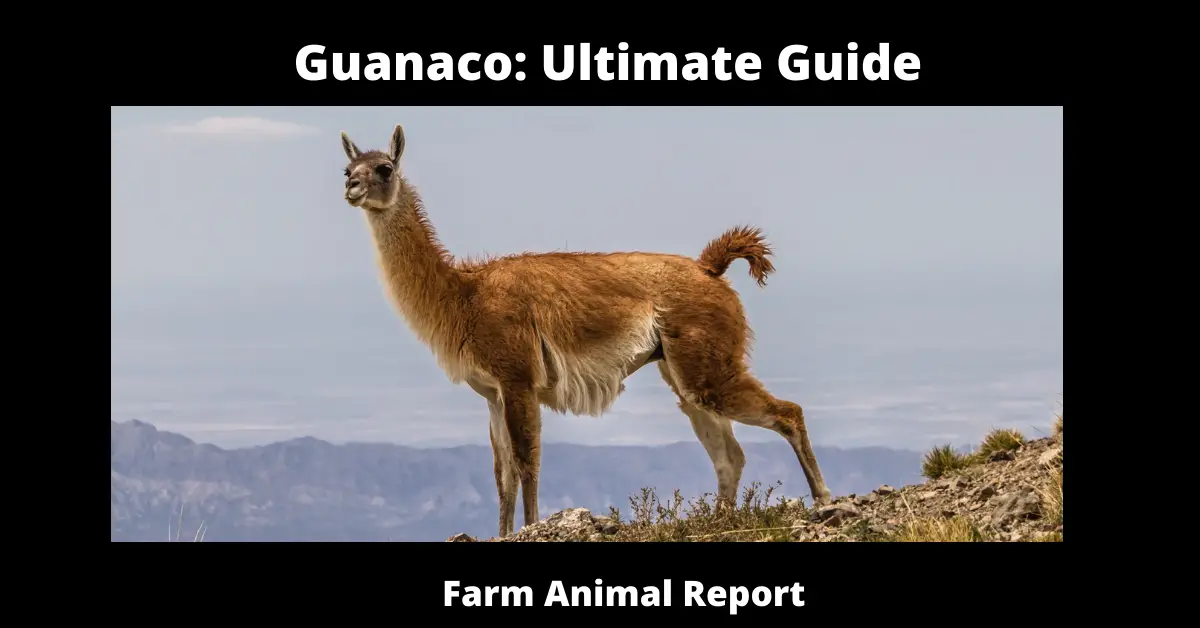As a general rule, Llamas can be any color, including white, gray, brown, black, or piebald, but all guanacos have brownish backs and white underparts, as well as grey faces and little straight ears. Guanacos and llamas are closely related in appearance, but guanacos are smaller and have shorter ears. Llamas are descended from guanacos, domesticated between 5,000 and 6,000 years ago, which is another point of differentiation. In addition, llamas do not exist in the wilderness, in contrast to guanacos.
Guanaco: Ultimate Guide
Guanacos (Lama guanicoe) are a type of camelid that resides in South America. The guanaco is closely related to the llama in Southern America. Its name derives from the Quechua word huanaco, which means “horse.” Young guanacos are known as Chulengos.
The guanaco is considered a small animal that can grow approximately 4 feet tall in terms of size. It is both smaller and more significant than the llama, as well as the alpaca. Its dark coloring is offset by white underparts and grey features such as the ears and neck. Guanacos can grow to be as large. as a small horse
This species can live in highly arid environments and at extremely high altitudes, and it can be found in abundance in Chile’s Atacama Desert and Andes Mountains.
Even if you don’t end up traveling to South America, you’ll at least be aware of the differences between llama and vicuna, and you’ll know how to tell them apart from their wild cousins, the guanaco, and the vicuna, should you ever find yourself in that region.
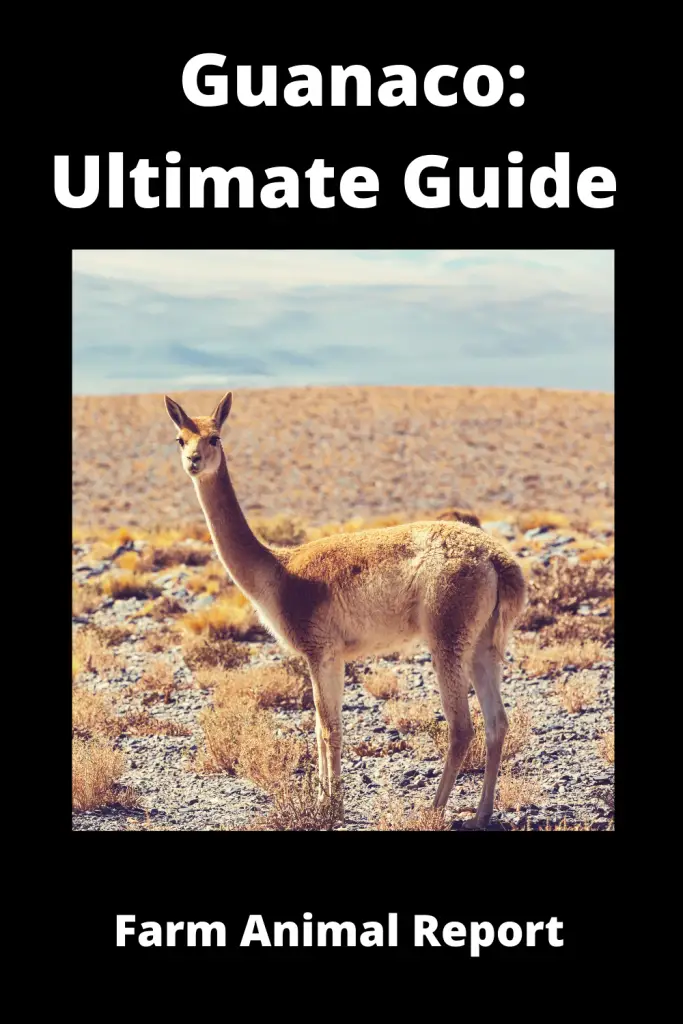
Can you Eat Guanaco?
Yes, it is possible to eat guanaco. Camel-like camelids native to the New World, guanacos have long been utilized for meat production in South America. Because the locals often dislike guanaco meat, most of the meat is sent to Europe.
Guanaco – Many countries have now banned their hunting because of this.
Can Guanaco be Domesticated?
Yes, it is possible to domesticate the guanaco. Because guanacos have a peaceful demeanor, people began to domesticate them for pack animals centuries ago. Llamas are descended from guanacos, which were domesticated 6,000 to 7,000 years ago and still exist today.
18 ways Alpaca Farmers make Money
What is the Difference Between a Guanaco and a Llama?
Even though guanacos and llamas are closely related, there are some significant differences between the two animals.
Llamas can be any color, including white, gray, brown, black, or piebald, but all guanacos have brownish backs and white underparts, as well as grey faces and little straight ears. Guanacos and llamas are closely related in appearance, but guanacos are smaller and have shorter ears.
Llamas are descended from guanacos, domesticated between 5,000 and 6,000 years ago, which is another point of differentiation. In addition, llamas do not exist in the wilderness, in contrast to guanacos.
What is Guanaco used for?
Guanacos are typically raised for their wool, meat, and skin. However, they have also been employed as pack animals.
What’s the Difference between an Alpaca and a Guanaco?
Guanacos are more slender than alpacas, with long legs, a long neck, and pointed ears. They are also more docile than alpacas. They have longer heads than the vicunas, which are similar but more delicate in appearance.
Guanacos are slightly different in color depending on where they are raised, but they are not nearly as diverse as alpacas. Various shades of brown, yellow, and red can be found on the body; white can be seen on the belly, rump, and backs of legs; grey appears on the head, ears, and nape of the neck; and black can be found on the tail.
What is the Difference between a Guanaco and a Llama?
It is estimated that llamas were domesticated in Peru’s Andean Highlands around 5,000 years ago. Llamas are descended from wild guanacos. They were essential to pre-Inca civilizations such as the Moche (who lived from 100 A.D. to 800 A.D.) and the Incas themselves, providing fiber, meat, and excrement for the Incas (for fertilizer).
In contrast to the guanaco and vicunas, the llama’s coat is available in various colors (including grey, white, brown, and black, either spotted or solid). It also has a slender and long face and neck and characteristic curved ears, distinguishing it from its relatives.
How Much does a Guanaco Cost?
Usually guanaco almost $19,000 – $20000
Where is Guanaco Found?
Guanacos can be found in the Andes mountains, up to 13,000 feet (3,962 meters) above sea level, and on lower plateaus, plains, and beaches in Peru, Chile, and Argentina. They are also found in the Amazon rainforest. Guanacos were previously overhunted for their thick, warm wool, which contributed to their extinction. They are now thriving in locations that are legally protected.
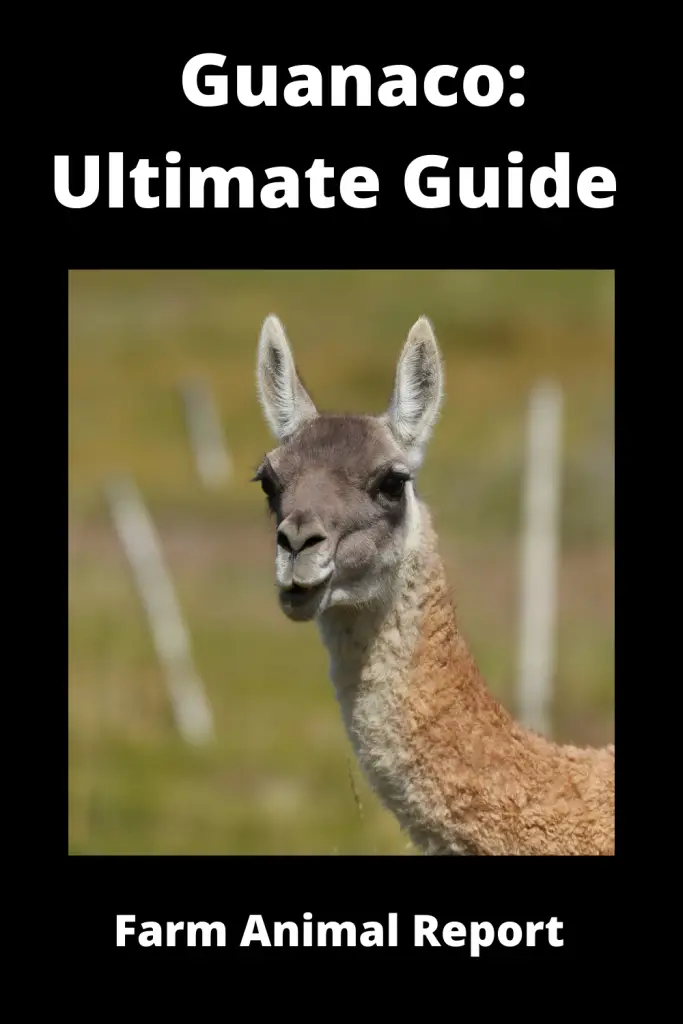
Is Guanaco a Llama?
No, the guanaco is not the same as the llama. Llamas are descended from guanacos, which were domesticated between 6,000 and 7,000 years ago in North America. They were mainly raised for their wool, meat, and skin, and they were also utilized as pack animals. Thus, today’s domesticated llama (also known as the guanaco) is the domestic version of the guanaco (llamas do not occur in the wild).
Do Guanacos Spit?
Yes, they can spit. Although guanacos are habitually mild-mannered, guanacos can also spit up to a distance of six feet if forced into a corner.
How does Guanaco Adapt to their Environment?
They have successfully adapted to their surroundings. Their necks have firmer skin to defend them from predators, while their soft and sensitive lips allow them to rootle through prickly foliage and detect delicious nibbles in the wild. They have a clever top lip split in the middle, which helps them direct food into their mouths.
What Climate do Guanacos Live in?
Guanacos are indigenous to South America’s Andean mountains, where they can be seen in large herds. They can survive at heights ranging from sea level to more than 4,500 meters above sea level. High-mountain regions of Peru, Bolivia, Chile, Patagonian, and Tierra del Fuego grassland in Argentina and Chile are home to these nocturnal creatures.
Guanacos are capable of surviving under the most severe conditions. Mountains, steppes, scrublands, and deserts are all places where they can be found.
Where did Guanacos Come from?
Guanacos are camelids that originated in South America and are found around the world. They can be found in Peru, Bolivia, Chile, and Argentina, among other places. Paraguay and the Falkland Islands both have a small indigenous population.
Where do the Llamas Live?
Even though their natural geography reaches throughout the Andes Mountains, their current scope extends far beyond this portion of the world. They can be found in Peru, Ecuador, Chile, Bolivia, and Argentina, among other countries in South America. Besides Australia and Europe, they can also be found on different continents such as North America and North America Pacific. They can be found in mountainous and temperate climates with more than 7,500 feet above sea level. Llamas can be found on ranches and farms worldwide, as well as in urban areas.
Approximately 168,000 llamas are currently living in Canada and the United States. It was in the early 1980s that the employment of llamas as guard animals first appeared in North America. According to legend, Americans who lived in the western regions of the United States employed them to protect their other animals, including cattle and sheep, from predators.
What Does your Average Guanaco Eat Every Day?
The guanaco generally consumed more than the sheep; their intakes were comparable to live metabolic weight. Usually, their dry matter intake per day is 3 %, and their green fodder intake is 10 % of their body weight.
In the same way, as cattle and sheep do, guanacos are ruminants, which means that their digestive system is divided into three chambers, allowing them to get all of the essential nutrients from the plant matter that they consume. After the food has been fermented and turned into cud, it is re-chewed to aid in the digesting process.
Guanacos are herbivores that eat various plants, including grasses, shrubs, lichens, succulents, cacti, and flowers. Guanacos are capable of surviving for long periods of time without water. Some people live in the Atacama Desert, where it is possible that it will not rain for 50 years at a time. They acquire their water from the cacti and lichens they eat, absorbing the moisture from the fog surrounding them.
Aside from humans, the guanaco’s principal predators are pumas and foxes, both native to South America.
What is the Guanaco Known for?
They are well-known for producing the highest-quality fiber. Guanaco fiber, which was first used in textiles in the mid-1900s, is prized for its rarity and delicate texture, and it is used to make luxury fabrics. It is regarded to be more fragile than alpaca fiber but coarser than vicunas fiber, and it is used to make luxury fabrics.
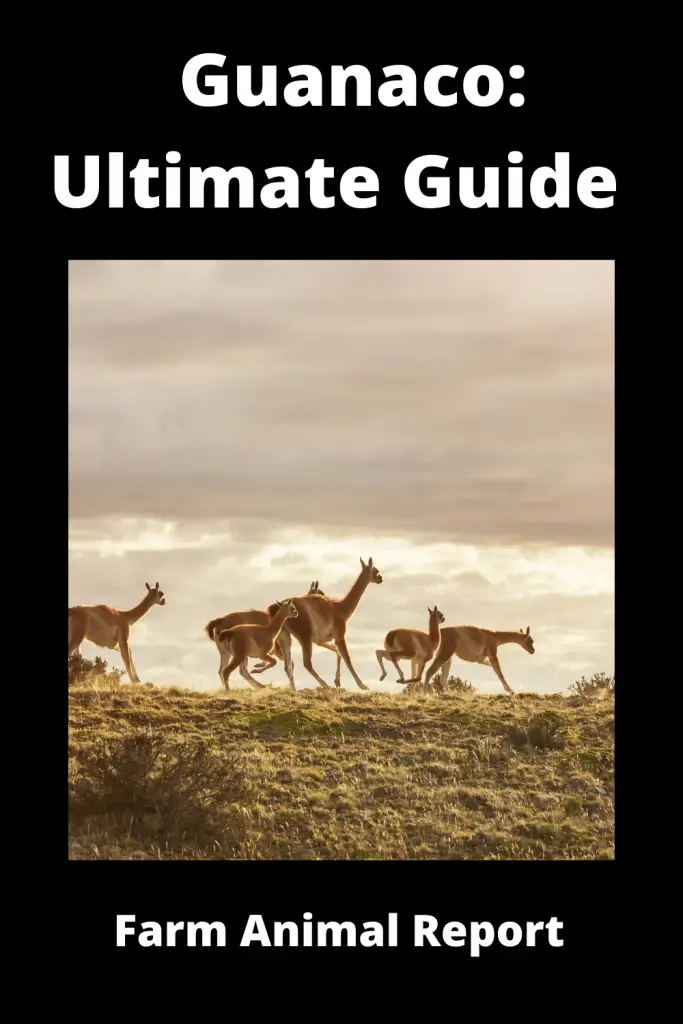
What does El Guanaco mean?
In Spanish, the guanaco is known as El guanaco.
What is the difference between an Alpaca Llama Vicuna and a Guanaco?
Show a photograph of any of the four South American camelids to an adult American or European, and there’s a 99 percent chance he’ll exclaim, “Llama!” and make a funny face. On the other hand, Western children are taught to distinguish between sheep and goats and between ducks and geese. Those considering a journey to the Andean areas owe it to themselves and their hosts to familiarize themselves with Llamas, Alpacas, Guanacos, and Vicunas before they depart.
The Camelid Family
Even though this blog is dedicated to highlighting the distinctions between the four South American species, it makes sense to begin by examining the similarities between them before moving on to the differences.
In North America, some forty million years ago, all camelid species descended from a single common ancestor. Migratory patterns began to emerge approximately 3 million years ago, which is fortunate because the North American population was wiped off during the last glacial period. The animals that moved south evolved into guanacos, vicunas, llamas, and alpacas, whereas those that moved east developed into camels and other camelids.
A few physical traits that all camelids have in common are as follows:
- They are devoid of horns.
- They do not have hooves on their feet. Instead, they have two-toed feet, which have toenails and soft footpads on the bottoms.
- Their top lips are divided into two sections, with each section being independently moveable.
- Their walking style is a sort of left-right-left march, in which they move both legs simultaneously on one side of the body. Because of this, when you ride them, you will notice a unique wobble in their body.
- They do spit when they are enraged, although they do not frequently become enraged at humans.
And now for some anatomical traits on the inside:
- They have stomachs that are divided into three chambers.
- They are the only animal species that has oval red blood cells.
Furthermore, they have a one-of-a-kind type of antibody currently being used in groundbreaking pharmaceutical research.
Llamas
The most obvious method to identify a llama is by its size. In terms of size, llamas are far and by the largest South American camelid, reaching 440 pounds. Although camels in the Middle East can weigh up to five times as much as an adult llama, nothing in South America comes close to looking like an adult llama. A llama has a lifespan of 15 to 30 years, depending on the species.
Llamas are the domesticated variety of guanaco. These two species are related in that they both have coarse hair that was considered “only suitable for commoners’ garments” during Inca times (in reality, the undercoat is exceptionally soft, although not as smooth as alpaca wool). Llamas have been used mainly as pack animals since they were domesticated approximately 5000 years ago, and in many sections of the Andes, they are still the primary mode of transportation. Guanacos are also raised for their meat and wool, and, curiously enough, they make excellent guard animals and be a source of food.
Alpacas
Alpacas are not only significantly smaller than llamas, but they are also significantly woollier. The only time you’ll ever see an adult alpaca mistaken for a young one is when the alpaca has recently been shorn. The second noticeable difference between the two species is the shape of their ears: alpacas have symmetrical, pear-shaped ears, while llamas have longer, wonkier ears that resemble bananas. Alpacas are typically styled in a “top knot” and are frequently dressed up like prize poodles by their owners, especially in touristy locations where alpacas are in high demand. Alpacas can weigh anything between 100 and 175 pounds and live for up to 25 years.
It has recently been established through DNA testing that alpacas are a domesticated variant of the vicunas, from which they derive their magnificent fiber and handy size. Alpaca wool is one of the most sought-after fibers on the planet, and alpacas produce it. It is hypoallergenic, warmer and softer than lambs’ wool, and more durable and exclusive than cashmere. It is also more expensive. Among the alpacas are two subspecies: the fluffy Huacaya alpacas, which look like teddy bears, and the long-haired Suri alpacas.
Guanacos
Guanacos are substantially larger than vicunas (the other wild species of South American camelid), but they are far smaller than their domesticated counterpart, the llama, weighing up to 200 pounds. The other significant distinction between guanacos and llamas is their color: llamas can be any color, including white, gray, brown, black, or piebald, but all guanacos have brownish backs, white underparts, and grey faces with short straight ears, whereas llamas can be any color, including white.
Its area stretches from Ecuador and Colombia in the north to Patagonia and even Tierra del Fuego in the south, making it one of the most adaptable of all animals. It has been demonstrated that guanacos can live at exceedingly high altitudes and can even survive on very little water, as evidenced by the populations in the Atacama desert. Guanaco wool is considered superior to llama wool (particularly the soft undercoat), but it is deemed inferior to alpaca or vicunas wool because of its coarse texture.
Vicuñas
The sleek, delicate vicunas are one of the favorite Andean animals. Still, if it hadn’t been for a determined conservation campaign in the second half of the twentieth century, I would have never had the opportunity to observe one in its natural habitat. In addition to the vicunas attractive, slim appearance (they weigh less than 150lb) and luxuriously soft wool, it also has some formidable adversaries. It is estimated that vicunas produce around a pound of wool per year; this is a small amount of wool, especially when you consider that their life expectancy is only 20 years.
During Inca times, the vicunas were a protected species, and only royalty was permitted to wear garments made of its wool. However, after the arrival of the Spanish, vicunas hunting became more open. This condition persisted until 1964 when the world’s population dropped to an all-time low of approximately 6000 people.
Although there are about 350,000 vicunas in Peru, Bolivia, Ecuador, and the northern parts of Argentina and Chile, the vicunas are still considered an endangered species. Wild vicunas are collected and sheared every year to deter poaching and protect endangered species. Their wool can bring up to $3,000 per pound, making it even more valuable than alpaca wool in terms of monetary value.
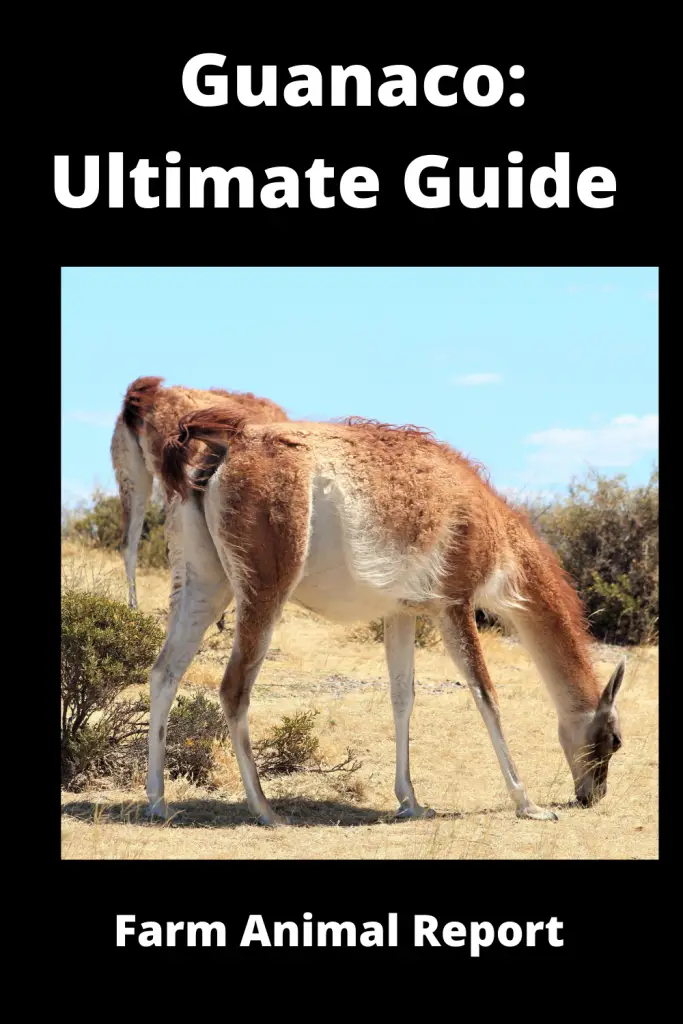
5 Amazing Facts about Guanaco
Take a drive down south in Chile, and you’ll be rewarded with the sight of a swarm of beautiful guanacos grazing on the horizon.
1. Guanacos like to Mingle with others
Guanacos are gregarious people who live in herds of up to ten females, and they’re young, with one dominant male as the leader. Baby guanacos are affectionately referred to as chulengos, and the four-legged creatures can walk after only five minutes of life in the wild. Female guanacos have a protracted eleven-and-a-half-month gestation period, following which a single chulengo is born between December and March during the South American summer months.
Apron ties are cut abruptly for male chulengos chased away from the herd after one year of living with their mother and learning to hunt. But after a brief period of bachelorhood, they finally organize their own herds of cattle. Because of several variables such as disease and extreme weather conditions, it is a complex world for a chulengo to survive in, and only 30% of the infants survive to adulthood.
2. They are related to certain well-known species.
In addition to being related to camels (albeit they do not have a distinctive hump), guanacos are linked to vicunas, alpacas, and llamas. All three of these animals are domesticated South American camelids, with the guanaco being considered the llama’s ancestor. Because of their calm and docile character, it was very simple for people to tame and teach the wild guanacos, which eventually evolved into the llamas we know and love today.
3. It is their nature to chuckle in the face of danger.
The puma is the only natural predator of the guanaco. When they are threatened, they make a high-pitched bleating sound that some have compared to a brief, sharp laugh, which alerts the remainder of the herd to the impending danger in the vicinity.
Although guanacos are generally mild-mannered, they may spit up to six feet away if cornered, which is quite a distance. Even though they were historically heavily hunted for their soft, thick, woolly coat, they are now protected from hunting, but unfortunately, illegal hunting occurs in many countries.
In the past, a nomadic pre-colonial tribe in the Patagonia region, the Tehuelches, relied on guanaco meat and wool for food and clothing. A significant number of enormous guanaco herds used to thunder across the Patagonian plains. Still, today, as a result of poaching and habitat devastation, just around 5 percent of past populations exist.
When the Europeans first came to the continent, it is estimated that there were up to 50 million guanacos living in the area. The introduction of domestic sheep, which have monopolized the best grazing pastures and have become the guanaco’s primary competitors for food, is assumed to be responsible for the current drop in population.
4. They have a high level of adaptation to their environment.
Guanacos have evolved some ingenious adaptations to make their life just a little bit easier, and they have done so in order to survive. Their necks have firmer skin to defend them from predators, while their soft and sensitive lips allow them to rootle through prickly foliage and detect delicious nibbles in the wild. Aside from that, they have a cleverly split upper lip that assists them in guiding food into their mouths.
Guanacos, like camels, can retain and store moisture from plants, allowing them to thrive in even the aridest regions. Furthermore, guanacos are ruminants, which means they have a three-chambered stomach. This means that they are able to get all of the essential nutrients from whatever they are eating because the food passes through the first stomach and is then regurgitated and ingested again. In addition to having two cushioned toes on each foot, guanacos have thick, long eyelashes that not only make them look beautiful but also protect their eyes from the dust stirred up by their fellow guanacos and blown through the air by the fierce winds of the Patagonian steppe.
5. They have big hearts, as well
Guanacos have been discovered living at elevations of up to 4,000 meters above sea level. Guanaco blood contains four times the number of red blood cells that we humans do to survive low oxygen levels. A teaspoon of red blood cells contains around 68 million red blood cells. Aside from having a calm demeanor, guanacos have enormous hearts that are 15 percent larger than the typical heart size of the same size as themselves.
Finally, guanacos are well aware of when they have stumbled onto an excellent photobomb opportunity.
Final Thoughts
South-central Peru, western Bolivia, Tierra del Fuego, Navarino Island, and the Falkland Islands are excellent places to look for guanacos. They were imported to the Falkland Islands from Argentina during the 1930s and became established there.
Guanacos have a pale fawn color with a pure white underside. They have adapted to all kinds of extreme and often cruel environmental conditions. Guanacos are masters of survival in a wide range of environments, from the very arid Atacama Desert to the frequently wet and wind-battered Torres del Paine National Park, and they may be found anywhere.


